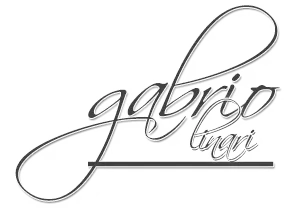Building Synergy Between SEOs and Developers
By Gabrio Linari, Last Updated on 24 February 2025
If you’re part of an online business venture, you probably understand that SEO and development teams are like two sides of the same coin: both crucial but often operating in parallel universes.
From my 11 years of international experience as a Global SEO consultant, I’ve observed that while these two departments are working towards the same organizational goals, they sometimes lack the collaboration and understanding required to maximize the potential of a digital strategy.
This lack of synergy isn’t just inefficient; it’s a missed opportunity for driving real growth. So, the question is: how can we create a more harmonious relationship between SEOs and developers? In this article, I’ll share valuable insights and strategies to answer this very question.
Chapter 1: Why Buy-In Is Crucial
When you work in SEO, you quickly realize that buy-in from all departments is not just beneficial; it’s crucial. Without a shared understanding and commitment to SEO best practices, strategies can quickly derail, causing serious setbacks. One might think that getting buy-in is merely a nice to have, but I want to emphasize that it can be a real “blocker” if not achieved.
Real World Example: The Importance of Buy In
In one of the companies I’ve consulted for, lack of buy-in led to an unexpected issue. The Engineering team made a unilateral decision to add a “back” button to the website navigation. While they believed to be improving UX, this change inadvertently added 500,000 new pages to be crawled, heavily impacting the crawl budget. I discovered this issue by chance during my monthly analysis with OnCrawl which is a powerful cloud based SEO crawler.
To address the situation, I had to implement a fix using an ‘exclude’ directive in the robots.txt file and initiate a site recrawl via Google Search Console. All these emergency steps not only consumed valuable resources but could have been completely avoided had there been better communication and buy in from the development team.
The point is, even if SEO experts like myself understand the technicalities, without organizational agreement, our hands are tied. We can’t prevent or mitigate the damage done by decisions made in a vacuum. Therefore, securing this, is not just about getting approval for SEO projects; it’s about establishing open lines of communication that facilitate collaboration and preempt issues before they escalate into major problems.
Chapter 2: Overcoming Developer Resistance
One of the most effective ways to bridge the gap between SEOs and developers is by clearly defining roles within the organization. Without clear role delineation, confusion reigns, leading to redundant efforts or, worse, crucial tasks falling by the wayside.
Developers Are Not SEOs, and SEOs Are Not Developers
It’s a simple but often overlooked truth: developers are experts in coding and system architecture, while SEOs specialize in optimizing website visibility and user engagement. These are two distinct skill sets, and expecting one to excel in the other’s domain is a recipe for inefficiency and misunderstandings.
Importance of C Suite and Managerial Involvement
There is another layer of complexity when considering the managerial roles that oversee these departments. For instance, your company should have a clear line of communication between the Head of SEO, SEO Manager, Director of SEO, and their counterparts in the development department, such as the Head of Engineering or CTO. To delve deeper into why executive support is crucial, check out my post on Executive C-Level Support. This will ensure that both teams are aligned at an organizational level, making it easier to overcome resistance at the operational level.
Collaboration: A Two Way Street
It’s not just about SEO experts dictating terms to developers or vice versa.
Defining roles clearly sets the stage for effective communication. It also creates a collaboration framework that leverages both departments’ strengths. This approach helps avoid the pitfalls of siloed operations which is key.
Furthermore, a well defined role structure reduces misunderstandings and project delays. It allows each department to focus on what they do best, optimizing performance. By reducing friction in the workflow, teams can deliver results faster. This efficiency benefits not just the teams involved but the organization as a whole. In the end, a synergistic approach based on clear roles amplifies overall success
Chapter 3: My Role in Facilitating Teamwork Between SEOs and Developers
In my capacity as an SEO consultant, I take on a multifaceted role to bridge the gap between SEOs and developers. The aim is to build a more cooperative and productive work environment.
Breaking Down Silos between SEO and Development Teams
My primary goal is to act as an intermediary who can communicate the technical language of SEO to developers and vice versa. This is where my comprehensive experience in both content strategy and web development comes in handy.
Establishing a Strong Line of Communication
One of the most effective strategies is regular meetings with engineering teams. Whether it’s bi-weekly catch ups or monthly planning sessions, the aim is to keep the lines of communication open.
The Importance of Early Involvement in Development Processes
A crucial aspect of mending the gap is for you to be involved in development processes early on. In one of my past roles, the lack of early involvement led to a problematic scenario which we saw earlier on this article.
For more details on how to make sure your technical SEO audit is implemented correctly, you can refer to my post on Tech SEO Audits that Bridge The Gap with Developers.
Chapter 4: Laying the Groundwork for Effective Communication
In my extensive experience working with both SEOs and developers, I can’t stress enough the importance of effective communication. The digital landscape is always changing, and so should our approaches to collaboration.
Embracing the Agile Framework
In my experience, adapting to frameworks that development teams know well is essential for collaboration. Specifically, I integrate my SEO tasks into the Agile framework they often prefer. This familiarity with Agile cuts through jargon and enhances our relationship. Using a framework they’re already comfortable with also boosts credibility and smooths future interactions.
Adapting to Pre Established Systems
When you encounter an established development team, you should prioritize flexibility and adapt to their existing systems. Contrarily, if I’m the first hire, I have the leverage to lay the groundwork and establish systems that suit my SEO requirements. It’s a different ballgame in each scenario. Adjusting to an existing system requires a deeper understanding of their workflow and possibly rearranging my SEO strategies to fit. On the other hand, being the first hire allows me the freedom to build SEO processes that suits both SEO and development needs from scratch.
Picking Up the Phone
Lastly, working across different time zones and communication styles can be challenging. Yet, direct conversations offer immediacy and clarity. A phone call or a video meeting often leads to quick solutions. I always prefer a personal touch in communication, which eliminates barriers and enhances problem solving. This approach is also excellent for brainstorming.
Conclusion: A Holistic Approach for Lasting Impact between SEOs and Developers
As we’ve seen, creating synergy between SEOs and developers is a necessity for the long term success of any organization. It involves a lot more than just speaking the same technical language. It’s about understanding each other’s roles, appreciating complexities, and most importantly, respecting the skills each party brings to the table.
Adapting to the developers’ way of work (WoW), be it Agile or any other methodology, goes a long way in streamlining communication.
But it’s equally important for the development team to be close to the ever changing landscape of SEO. This is why I strongly encourage a cross disciplinary approach. When SEOs and developers collaborate from the outset, they also innovate in ways that silos cannot achieve.
The benefits of good SEO/developer communication are too important to ignore, while the costs of failure are high. A monthly ‘Cross Disciplinary Sync Session’ is a great option; teams can explore new trends, technology shifts, and upcoming challenges. Regular dialogue ensures everyone stays aligned, creating a breeding ground for innovative solutions. Don’t let silos hinder progress; act now.
If you’re interested in further guidance or wish to brainstorm strategies, feel free to get in touch with me.
About The Author
I have over 15 years of professional experience spanning SEO, strategic digital transformations, and business growth initiatives. My expertise lies in aligning SEO efforts with business goals to drive meaningful results. I regularly post on LinkedIn about Growth Marketing, remote work, and inspirational topics. Check out my latest posts on Gabrio’s Thoughts and subscribe to my YouTube Channel ROCK SEO (Rocky is the boss!). You can discover more about me here.


